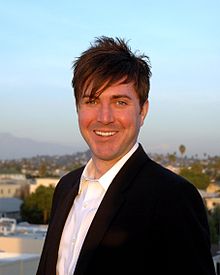This is a timeline of quantum computing.

In condensed matter physics, a supersolid is a spatially ordered material with superfluid properties. In the case of helium-4, it has been conjectured since the 1960s that it might be possible to create a supersolid. Starting from 2017, a definitive proof for the existence of this state was provided by several experiments using atomic Bose–Einstein condensates. The general conditions required for supersolidity to emerge in a certain substance are a topic of ongoing research.
Superconducting quantum computing is a branch of solid state quantum computing that implements superconducting electronic circuits using superconducting qubits as artificial atoms, or quantum dots. For superconducting qubits, the two logic states are the ground state and the excited state, denoted respectively. Research in superconducting quantum computing is conducted by companies such as Google, IBM, IMEC, BBN Technologies, Rigetti, and Intel. Many recently developed QPUs use superconducting architecture.

An optical microcavity or microresonator is a structure formed by reflecting faces on the two sides of a spacer layer or optical medium, or by wrapping a waveguide in a circular fashion to form a ring. The former type is a standing wave cavity, and the latter is a traveling wave cavity. The name microcavity stems from the fact that it is often only a few micrometers thick, the spacer layer sometimes even in the nanometer range. As with common lasers, this forms an optical cavity or optical resonator, allowing a standing wave to form inside the spacer layer or a traveling wave that goes around in the ring.
A quantum gyroscope is a very sensitive device to measure angular rotation based on quantum mechanical principles. The first of these was built by Richard Packard and his colleagues at the University of California, Berkeley. The extreme sensitivity means that theoretically, a larger version could detect effects like minute changes in the rotational rate of the Earth.
In physics, quantum acoustics is the study of sound under conditions such that quantum mechanical effects are relevant. For most applications, classical mechanics are sufficient to accurately describe the physics of sound. However very high frequency sounds, or sounds made at very low temperatures may be subject to quantum effects.
The Breakthrough of the Year is an annual award for the most significant development in scientific research made by the AAAS journal Science, an academic journal covering all branches of science. Originating in 1989 as the Molecule of the Year, and inspired by Time's Person of the Year, it was renamed the Breakthrough of the Year in 1996.
A macroscopic quantum state is a state of matter in which macroscopic properties, such as mechanical motion, thermal conductivity, electrical conductivity and viscosity, can be described only by quantum mechanics rather than merely classical mechanics. This occurs primarily at low temperatures where little thermal motion is present to mask the quantum nature of a substance.
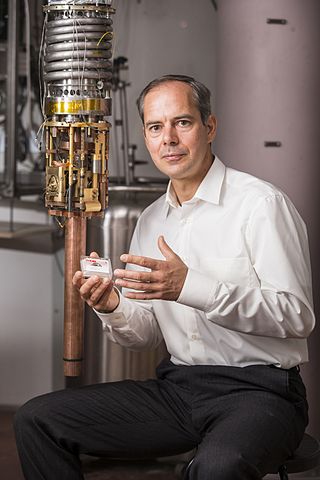
Dirk (Dik) Bouwmeester is a Dutch experimental physicist specializing in quantum optics and quantum information. He currently holds faculty positions at the University of California at Santa Barbara and at Leiden University in the Netherlands.
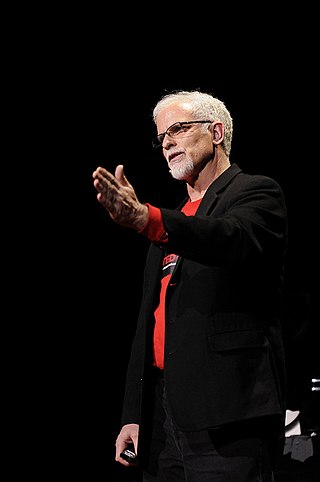
Michael Lee Roukes is an American experimental physicist, nanoscientist, and the Frank J. Roshek Professor of Physics, Applied Physics, and Bioengineering at the California Institute of Technology (Caltech).

A quantum machine is a human-made device whose collective motion follows the laws of quantum mechanics. The idea that macroscopic objects may follow the laws of quantum mechanics dates back to the advent of quantum mechanics in the early 20th century. However, as highlighted by the Schrödinger's cat thought experiment, quantum effects are not readily observable in large-scale objects. Consequently, quantum states of motion have only been observed in special circumstances at extremely low temperatures. The fragility of quantum effects in macroscopic objects may arise from rapid quantum decoherence. Researchers created the first quantum machine in 2009, and the achievement was named the "Breakthrough of the Year" by Science in 2010.
Spin engineering describes the control and manipulation of quantum spin systems to develop devices and materials. This includes the use of the spin degrees of freedom as a probe for spin based phenomena. Because of the basic importance of quantum spin for physical and chemical processes, spin engineering is relevant for a wide range of scientific and technological applications. Current examples range from Bose–Einstein condensation to spin-based data storage and reading in state-of-the-art hard disk drives, as well as from powerful analytical tools like nuclear magnetic resonance spectroscopy and electron paramagnetic resonance spectroscopy to the development of magnetic molecules as qubits and magnetic nanoparticles. In addition, spin engineering exploits the functionality of spin to design materials with novel properties as well as to provide a better understanding and advanced applications of conventional material systems. Many chemical reactions are devised to create bulk materials or single molecules with well defined spin properties, such as a single-molecule magnet. The aim of this article is to provide an outline of fields of research and development where the focus is on the properties and applications of quantum spin.

David Jay Julius is an American physiologist and Nobel Prize laureate known for his work on molecular mechanisms of pain sensation and heat, including the characterization of the TRPV1 and TRPM8 receptors that detect capsaicin, menthol, and temperature. He is a professor at the University of California, San Francisco.
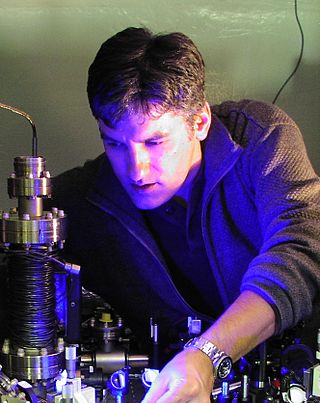
Christopher Roy Monroe is an American physicist and engineer in the areas of atomic, molecular, and optical physics and quantum information science, especially quantum computing. He directs one of the leading research and development efforts in ion trap quantum computing. Monroe is the Gilhuly Family Presidential Distinguished Professor of Electrical and Computer Engineering and Physics at Duke University and is College Park Professor of Physics at the University of Maryland and Fellow of the Joint Quantum Institute and Joint Center for Quantum Computer Science. He is also co-founder of IonQ, Inc.
Integrated quantum photonics, uses photonic integrated circuits to control photonic quantum states for applications in quantum technologies. As such, integrated quantum photonics provides a promising approach to the miniaturisation and scaling up of optical quantum circuits. The major application of integrated quantum photonics is Quantum technology:, for example quantum computing, quantum communication, quantum simulation, quantum walks and quantum metrology.

Cavity optomechanics is a branch of physics which focuses on the interaction between light and mechanical objects on low-energy scales. It is a cross field of optics, quantum optics, solid-state physics and materials science. The motivation for research on cavity optomechanics comes from fundamental effects of quantum theory and gravity, as well as technological applications.
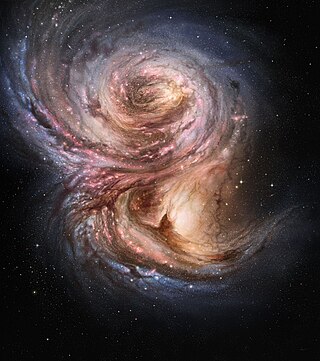
SMM-J2135-0102 is a galaxy discovered using the Large Apex Bolometer Camera (LABOCA) of the Atacama Pathfinder Experiment (APEX) telescope.
John M. Martinis is an American physicist and a professor of physics at the University of California, Santa Barbara. In 2014, the Google Quantum A.I. Lab announced that it had hired Martinis and his team in a multimillion dollar deal to build a quantum computer using superconducting qubits.
Quantum engineering is the development of technology that capitalizes on the laws of quantum mechanics. Quantum engineering uses quantum mechanics as a toolbox for the development of quantum technologies, such as quantum sensors or quantum computers.
Pritiraj Mohanty is a physicist and entrepreneur. He is a professor of physics at Boston University. He is most known for his work on quantum coherence, mesoscopic physics, nanomechanical systems, and nanotechnology with a recent focus on biosensing and nanomechanical computing.
